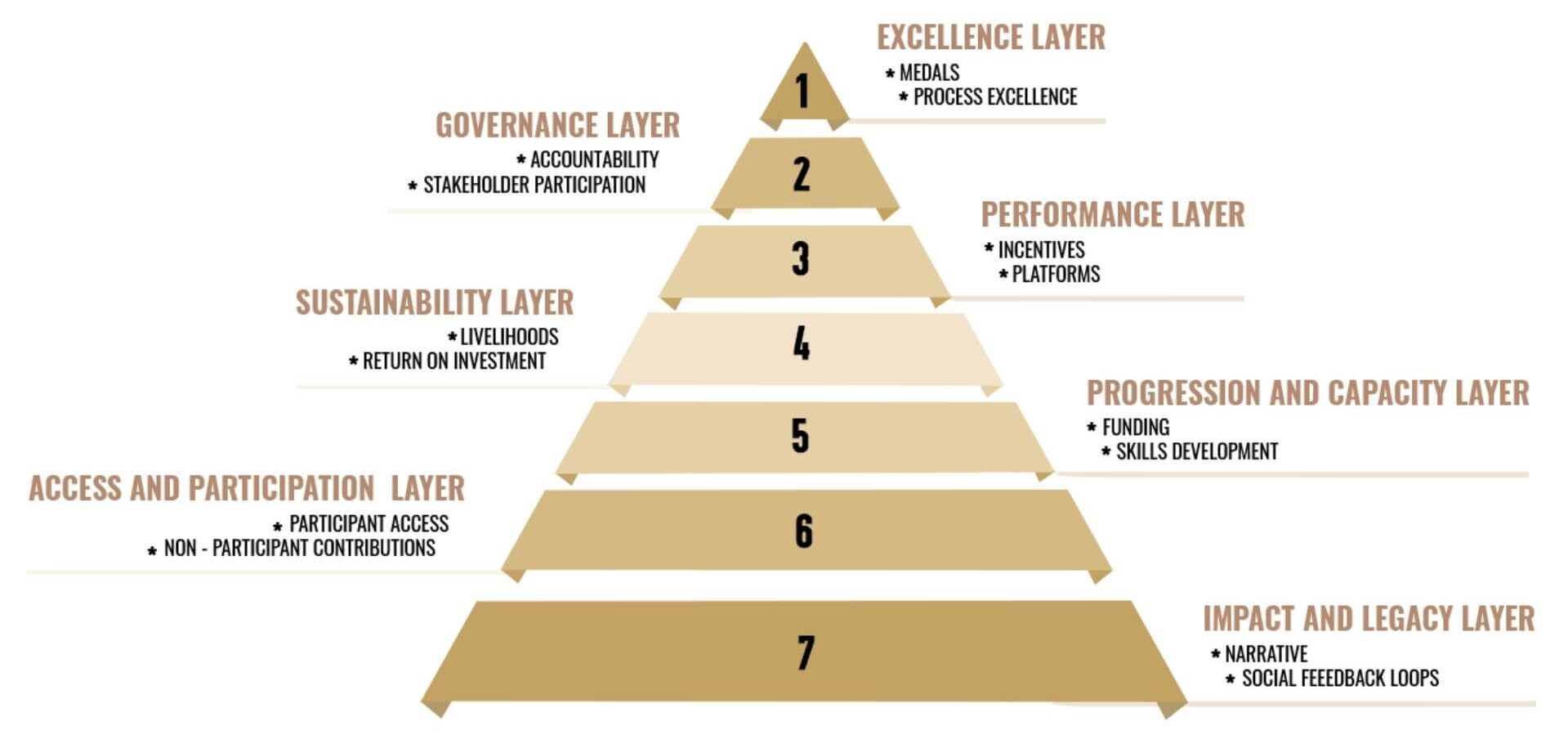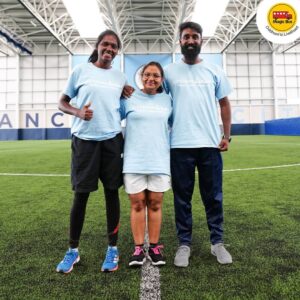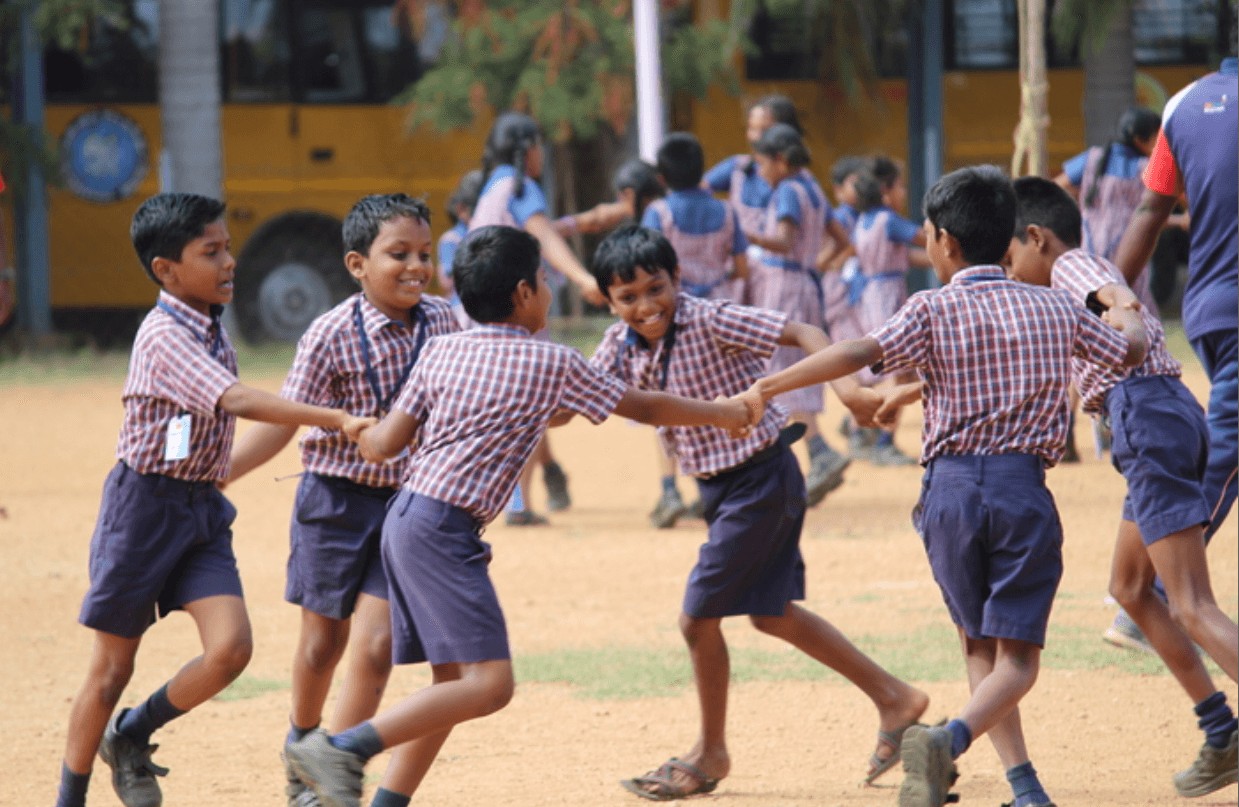Anyone can relate to sport. It triggers a bevy of memories – from growing up playing with neighbourhood children in the local park, to competing in an inter-school match, or playing with friends during school recess. The sense of community it gives us makes it all that more special. For any individual, sport feeds into the elements of a fulfilling life. Whether one is playing, organising or watching, it is also a bridge to an engaged community. These elements are at the heart of sport’s unique capability to benefit society.
The idea that sport can affect social change is not a new one. Yet, in a country like India, it has not traditionally been seen as a frontline instrument. Historically, the popular notion of sport has prioritised the quest for international achievement and medals. We have come a long way on that count, and success has been progressively achieved through the tireless efforts and determination of our talented athletes, and a more systematic approach to their preparation.
However, sport doesn’t necessarily have to be limited to the realms of excellence, competition and performance. While enveloping these, it can play a broader transformative role for the society we live in. India is no longer a country in which sports excellence is seen as unattainable or a matter of low priority. This evolution, in fact, readies the ground and sets the stage for a far wider role for sport in our country, and a discussion on how this can be achieved.
Of Microcosms and Ecosystems: The Story Thus Far
Sport is a microcosm of society, and the role it can play in broader contexts lies in this reflection. Its ability to find acceptance without the standard barriers of inter-personal difference positions it uniquely to create economic and social opportunities, neutralise inequalities, and build communities.
Using sport to target societal outcomes requires an approach that recognises the different roles for sport, and the levers necessary to unlock its potential. It also requires treating sports as an equivalent intervention to other social impact mechanisms used more commonly. This allows for a systemic approach, driving the quest by all for a physically active and engaged life. With opportunity and incentives in place, everyone can find a way to participate in sport, and to create social meaning through it, both personally and externally. Sports’ tendency to inherently tilt towards fair play, excellence, comity and respect enhances overall systemic inclusion, empowerment, and equality, while also taking participants through a journey of personal growth and engaged citizenship.
Yet, there are challenges to this proposition of universal participation. According to a PwC survey from 2019, while plenty of children take up sports in their early years, there are precipitous drop out rates during their teenage years. There are many reasons for this, and addressing them becomes a pressing need. This is where the Sports and Society Accelerator will intervene as an ecosystem-builder, using a Sports Stack approach to creating public cultural infrastructure for the universal adoption of sport.
The Untapped Potential that Sport Holds
Policy and research tools can help build new understandings, and result in actionable and measurable outcomes. There is significant potential for adopting simple designs that can drive social inclusion and mass participation in sports and exercise. The positive intent across several levels of government—both Central and State—is extremely encouraging, and sets the foundation from which sports’ role at a population scale can be optimised.
There is also plenty of good work being done to drive the government’s intent forward. Not-for-profits like Slum Soccer present an excellent example. While navigating a variety of complex social issues, the organisation promotes the idea that “All we ask them to do is kick a ball. That simple act is therapeutic in itself.” Simple designs for sport interventions can inculcate a set of essential personal skills, all of which aggregate and compound into broader social development and change.
We are excited to share that our Shakti girls program is kicked off in #kolkata in partnership with @AusCGKolkata to engage and educate girls from underserved communities about life skills and #menstrualhygiene management using the medium of #football ⚽ #girlsempowerment pic.twitter.com/2fOEYHeAY8
— Slum Soccer (@slumsoccer) June 27, 2022
So how can research, policy and action be brought together? The Sports and Society Accelerator puts forward an actionable systems framework that can help keep a broader focus on concurrently vital elements in driving social transformation. This is captured in the Accelerator’s seven-layer Sports Stack model, as seen in the diagram below.

Introducing the Sports Stack
The Sports Stack is both an evaluative framework and a policy lens that facilitates a whole-of-system balanced approach to the design, implementation and monitoring of policies and initiatives involving sports. Through top-down analysis, the Sports and Society Accelerator attempts to clarify the approach, presenting the opportunity for participative decision-making and creatorship when the various layers intersect of the Stack interact and drive each other.
As a starting point, assume ‘sports for society’ policy frameworks and action by state or central governments are the foundation or Application Programming Interfaces (APIs) of this Stack. A participative model, therefore, is one that allows organisations and individuals to use this foundation layer, and participate and contribute in targeted ways to address needs within a particular layer. This allows innovation, scale, pecuniary positive externalities, and a community-driven social impact ecosystem. If you can participate, you can contribute. When the access and involvement barriers no longer exist and the incentives are aligned, people will start solutioning in ways that are meaningful to themselves, their associates and their communities. As more do this, a momentum and cascading virtual social network develops. A bias towards action and change begins to predominate. This may sound overly simplistic, but human history shows sport’s potential to win against the odds time and again. Building well and for the right reasons requires cohesion, shared common interests, government support, and awareness.
A gold medal won by an Abhinav Bindra or a Neeraj Chopra can inspire many to take up sport. As they do so, and the base is broadened, more world-class athletes will be produced. This needs work at multiple levels spread across various layers and focus areas. The co-dependency between the top and bottom of the Sports Stack is critical to a sustainable, thriving ecosystem. Many connectors, handovers and interfaces are required for the transitions, progressions and balances that are involved. This is where the various layers of the Stack come into play, pulling their own weight and contributing to ecosystem health.
The Layers of the Sports Stack
An examination of the seven-layer Stack begins with the ‘Excellence’ layer, which deals with elite programmes towards the pursuit of medals or international championships. Through the effort of the Central Government’s Target Olympic Podium Scheme (TOPS), state-specific efforts in coaching and infrastructure, federations and non-profit organisations, major strides have been taken towards actualizing these goals. With the success of Indian athletes at the Tokyo Olympics and the Tokyo Paralympics, this layer is reasonably well positioned in terms of policy, constituents, resources and outcomes. A focus on building a wider culture of excellence will have to continue to drive these efforts.
To ensure adequate growth upwards and downwards in the Stack, the ‘Governance’ layer has a major part to play. The support and investment sports needs for a truly universal foundation, will expect accountability and transparency.
To support the ‘Excellence’ layer, a well-functioning and well-funded ‘Performance’ layer is needed to incentivize and actualize platforms from which capability and longevity can be enhanced in safe and enabling environments at moderated personal cost.
Next comes the ‘Sustainability’ layer, where sport’s role as a source of livelihood for a diverse array of people is recognised. It recognises the need to build social protections and risk mitigation tools if diverse groups are to access opportunities for upward mobility. It is also the layer where investments in the sporting ecosystem can be identified and utilised towards adequate returns. These returns do not actually need to be quantified in terms of tangible values, but instead in terms of the social capital generated, and the positive social impact of the investments in sport.

The not-for-profit Magic Bus, for example, uses a model with a focus on sustainability and livelihoods. In what they call “Childhood to Livelihood”, the idea is to use sport as a component in teaching life skills, thereby using it as a key part of their program to help children from marginalised communities in completing secondary education and equipping them with skills for employment.
Even more so, training in sports can prepare for life and careers both inside and outside sports. A United Nations report pointed out that “participation of women and girls in sport challenges gender stereotypes and discrimination”, making it a vehicle for empowerment across sectors. This was backed up by an EY report in 2018, which outlined how 94% of women in C-suite leadership positions in the US had formerly played some kind of sports.
You May Also Like: How More Women Coaches Can Change The Game In India
This is where the next layer of ‘Progression and Capacity’ gains prominence. Here, skill development takes place, by building capacity in the sports ecosystem for universal and wide opportunities.
A layer below, and closely connected, is the ‘Access and participation’ layer where the Accelerator’s theory of change is rooted. Here, population-scale participation in sports and physical activity, either played or supported by any individual, is the essential outcome. Universal participation, with a focus on attaining equality, inclusion, and empowerment through opening access and removing barriers, also has several other upstream and downstream benefits and resonates through the Stack. For example, it will inevitably help broaden constituents of the excellence layer by expanding the talent pool because of universal participation in sports or physical activity. Anyone and everyone should be able to participate in sport in any way, because of all the good that sport is capable of ensuring for society. This is why the access and participation layer is the Accelerator’s primary focus.
This brings us to the bottom layer. The ‘Impact and legacy’ layer is both a starting point and a population-scale movement. Through adequate and accurate documentation of achievements, capabilities, potential, and learnings, it is this narrative at a mass scale which helps build a legacy of sports for entire communities and society at large. The social feedback loops allow for awareness, encouragement, enhancement, and expansion of all that is beneficial to society from sports. This layer’s role is not only to show all of us what can be done, but it also feeds into all the other layers of this Stack. A successful legacy impact pushes more people to demand access and others to enable participation, putting upward pressure on the other layers of the Stack.
The Full-Stack Approach in Practice
From a policy perspective, the following illustration will be useful. In a recent report on actualising a fundamental right to physical literacy titled ‘From Stasis to Movement’, the Accelerator proposed a full-Stack approach to how the issue may be approached. A relevant extract is below:
“The considerable diversity of the forms and contexts of physical education, physical activity and sport suggests that a great deal of their relevance for civil society lies in their variety and adaptability to local requirements and conditions. To fully realize their potential, a full-Stack approach is recommended with cooperation required across public policy sectors, such as health, education, city development, infrastructure, and transport, as well as with private stakeholders, to develop and implement legislation, regulations and national plans of action to bring salience and understanding to the value of physical literacy both at personal and societal levels.”
Similarly, the Accelerator’s Submission to the Department of Empowerment of Persons with Disabilities (DEPwD) on the Draft National Policy for Persons with Disabilities uses the full-Stack approach, calling for a wider and more balanced understanding of the role of sport, physical activity and movement in the lives of people with disabilities. Opportunities for reform and suggestions for actionable interventions are provided within each layer of the Stack and a whole-of-sports approach is adopted with the intention of using the full social and economic potential of sports.
Also Read: Sports and Fitness Services in India Need to Account for the Differently Abled More Seriously
In this way, by espousing the principles of open innovation, stakeholder participation and capacity building in all dealings with governments, enterprises and civil society, the Accelerator hopes to build institutions and processes and enable entrepreneurs and changemakers to deliver on the social potential of sport and thereby address issues of inclusion, empowerment and community.
The Road Ahead for Sport and Development in India
The trifecta of universal access, participation, and benefit might at first blush appear virtually unattainable in the Indian context. Yet, dedicated efforts and an ecosystem-building approach have the potential to effectively turn the tide and bring cascading change. Existing partnerships and knowledge of several meaningful initiatives provide the ecosystem with a headstart in bringing large-scale programs with tangible goals to life. The machinery of a vibrant and growing social enterprise community, combined with enabling sports policy from governments, can deliver scale and impact in previously unexplored ways. Sport can show the way to building a thriving, confident and participative society that encourages its citizens to self-solve local problems and find ways to thrive.
Athletes are often reminded that they are not bigger than the sport they play. It is equally true that no sport is bigger than its role in society. It is time for us to make space for sport to achieve its potential and deliver on its social promise. We believe the Sports Stack can show the way.
Featured image of children re-engaging in play at school after two years of lockdown courtesy SportzVillage






